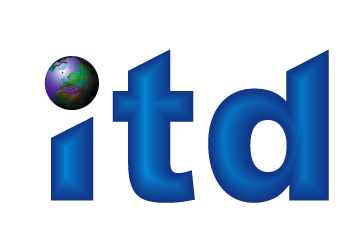[left_side]
Workshop Overview
Assertive means demonstrating we see things from both points of view and offering solutions which help both parties.
The workshop looks at typical situations in law firms where some business services people do not show enough assertion, for example; presenting ideas to senior lawyers or clarifying the need for urgency from lawyers or colleagues. It also looks at the specific situations the participants bring into the workshop and gives practical ideas and help on how to do things differently.
The workshop reviews what assertive behaviour looks like and how to develop the confidence to be more assertive. We also look at case studies where ITD have helped business services professionals to develop increased assertion with fantastic results.
[/left_side][right_side]
[/right_side]
[dottedline][/dottedline]
[left_side]
Pre workshop activity
- Meeting to discuss the participant’s needs and those of the organisation
- Draft workshop outline tailored to your needs
- Agreement of agenda
- Participants complete a short questionnaire and read the ITD Work Style Model in preparation for the workshop.
Duration
- Half a day to a full day, or two half days.
Why being assertive is so important for business services in a law firm
Lawyers tend to be very bright, very articulate, quick thinking and often quite forceful. Business services people tend to be helpful, accommodating and pleasant. Put the two together and it can work very well. But sometimes it can lead to the business services people being overwhelmed by the lawyer and other more forceful colleagues.
Assertiveness is partly about standing up for ones self, as well as recognising the needs of the other person. It is important to recognise that being more assertive, can lead to a better, more realistic solution for the other party.
Typical Agenda
- Introduction & personal objectives
- Challenges with being assertive in a law firm – understanding the perspective of a partner, manager and those you’re working with
- Clarifying assertive from aggressive
- How non assertive behaviour can lead to inefficiency, for example:
• hovering at a door waiting for someone to notice you;
• sending unclear chaser emails;
• automatically agreeing with someone else because you think you have to;
• staying in your comfort zone – not taking on more challenging work;
• working to cover up mistakes hoping you can fix the problem before someone notices; or
• dismissing compliments on your work
- Developing confidence
- Developing assertion in small steps
- Creating efficiency
- Achieving your goals
- Summary & personal actions
Post workshop activity
- Participants leave with individual actions
- Email follow up of personal action plans
- Suggested conversation with their line manager on their actions
- Optional WebEx conference call follow up on these actions
- Optional 121 coaching
- ITD blog with further tips and suggestions
[/left_side][right_side]
Client feedback
- “The workshop was very engaging and our guys were working on their challenges throughout the session.”
- “Good comfortable atmosphere created from the start.”
- “Achieved exactly what I wanted.”
Participant comments
- “Very interesting.”
Call or email ITD to explore how we can help business services people become more assertive at work
[/right_side]
[dottedline][/dottedline]
[left_side]
Developing Assertive Behaviour – Case Study
This is the story of a secretary who was a participant on an assertiveness training course. She worked for a medium sized law firm and for a particular fee earner.
Background
This secretary was experienced with around 10 years at two law firms. She enjoyed her work but had a big problem with one fee earner.
Need
The fee earner would give this secretary work by walking up to her desk, dropping the file or files on the secretaries desk and walking back to her office. No explanation, no briefing, no discussion. My interpretation of this was that the secretary by her lack of assertion had allowed the fee earner to believe that this was not only acceptable behaviour, but that it was the desired way of working for the secretary. The need was therefore to retrain the fee earner through the behaviours of the secretary.
At the time of the workshop the secretary was ready to leave the firm.
Activity
It was suggested that the secretary could behave in a more assertive manner by:
- Communicating to the fee earner that work needed to be discussed not dumped.
- By communicating in a more direct style, as it was surmised that the fee earner was a direct person herself.
- Acting quickly before she made the decision to leave the firm.
[/left_side][right_side]
Outcomes
The main outcomes of this session were:
- The secretary did decide to act
- One day at 4.00pm the fee earner walked towards her desk with a pile of work. The secretary stood and said ‘I have work to take me to the end of the day, so I can’t do that now, but I could do it in the morning.’
- The fee earner said ‘ok’ and returned to her office
- The next day the fee earner asked about when things could get done
- The relationship progressed until they even sat and had a coffee together.
- Her colleagues were astonished at the change in the fee earners behaviour, all from a relatively small behavioural change in being more assertive.
What the participants said
- “The session produced everything I might have hoped for and a great deal more.”
- “The office has been taken over by all of our efforts last week, it’s brilliant!”
- “The Quam is now a part of everything we do, quite remarkable!”
- “ITD did a brilliant job; superb blend of facilitation, suggestion and creativity.”
- “The activities were excellent, especially making the TV adverts!”
[/right_side]


